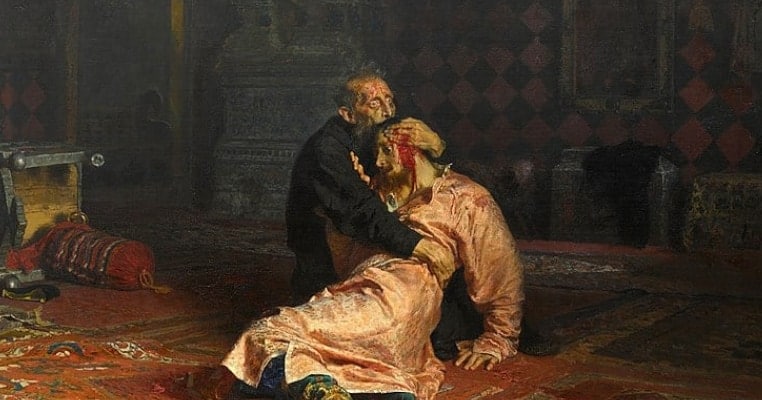As famously and poetically decreed: “Power tends to corrupt, and absolute power corrupts absolutely”. Reigning over millions of subjects, many of whom desire greater power and would gladly supplant one’s own rule, invariably results in intrigues, conspiracies, and plots. However, whilst family remains an important bond, history repeatedly demonstrates that blood is sometimes not enough to compel peaceful co-existence. Whether a product of treachery, anger, or rivalry, history is littered with rulers ruthlessly dispatching their relatives for a litany of reasons.

Here are 20 historical rulers who, for better or worse, murdered members of their own family.

20. Ivan IV, incorrectly known colloquially as Ivan the Terrible, unintentionally killed his son when he struck him angrily on the head with a spiked staff
Ivan IV, also known as Ivan Grozny – commonly mistranslated as “Ivan the Terrible” instead of the more accurate “Ivan the Formidable” – was Grand Prince of Moscow from 1533 to 1547 and Tsar of All Rus’ from 1547 until his death in 1584. Overseeing the expansion of the Russian state, including conquering the territorial Khanates of Kazan, Astrakhan, and Sibir, the reign of Ivan also saw formal recognition of the de facto supremacy of Moscow over the regions of modern-day Russia. However, Ivan IV was also a highly troubled individual. Although predominantly an intelligent and devout person, the Russian ruler was prone to episodes of uncontrollable anger and insanity.
During one such instance in 1581, Ivan beat his pregnant daughter-in-law, Yelena Sheremeteva, for dressing immodestly. Sufficiently brutal to ultimately cause Yelena to miscarry, Ivan was confronted by his son, Ivan Ivanovich, having heard the screams of his wife. In the course of an argument, Ivan, in a fit of rage, struck his son in the skull with his scepter. Although not intentional, the younger Ivan was felled bleeding profusely from the head. According to witnesses, the elder Ivan threw himself to the floor screaming “may I be damned! I’ve killed my son! I’ve killed my son!” Awaking briefly to forgive his father, the younger Ivan died four days later.

